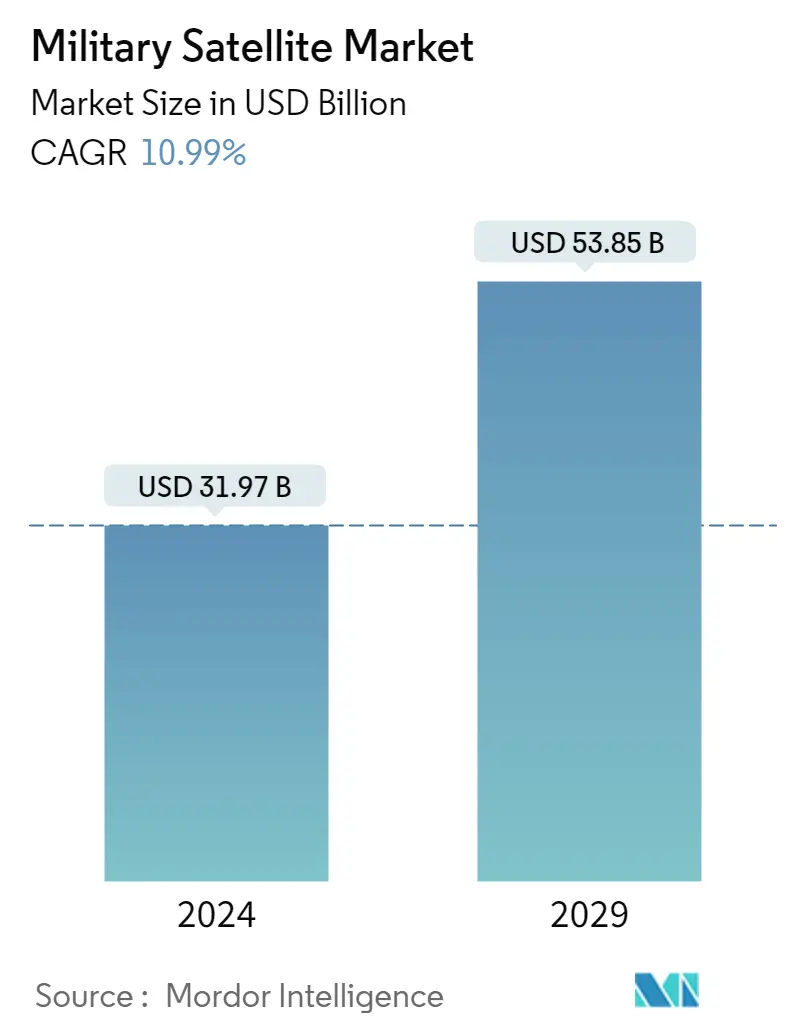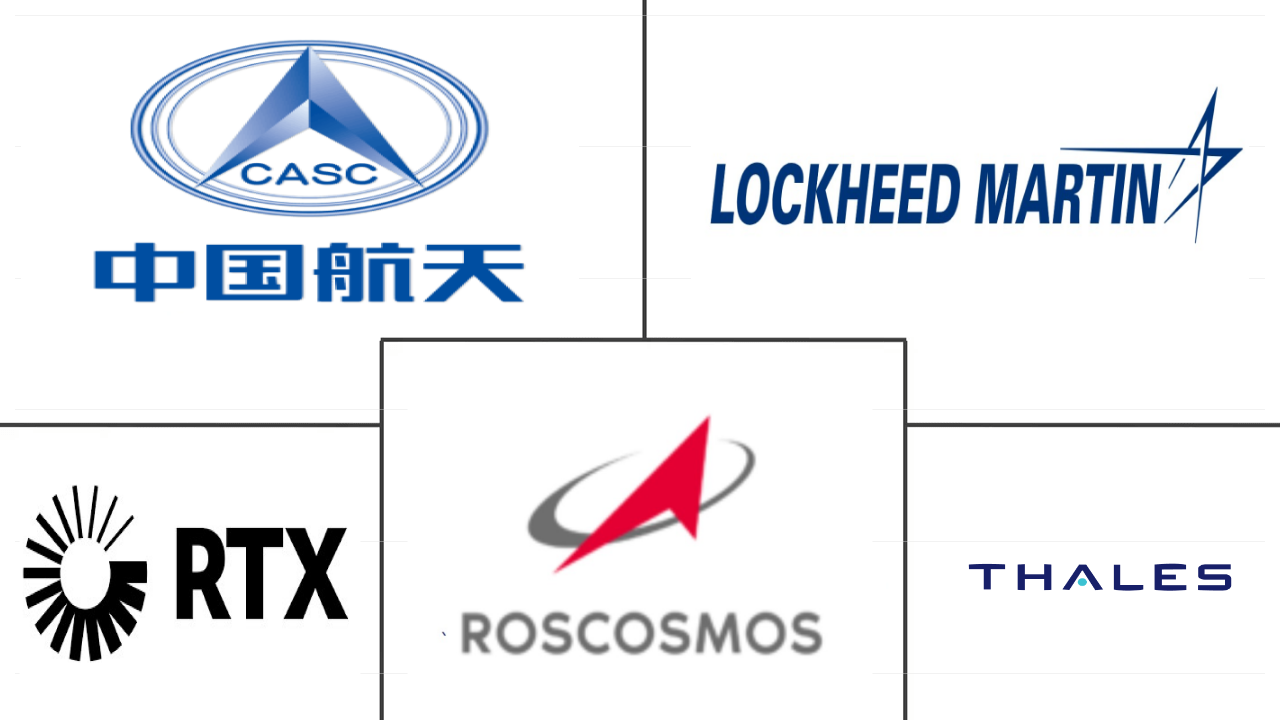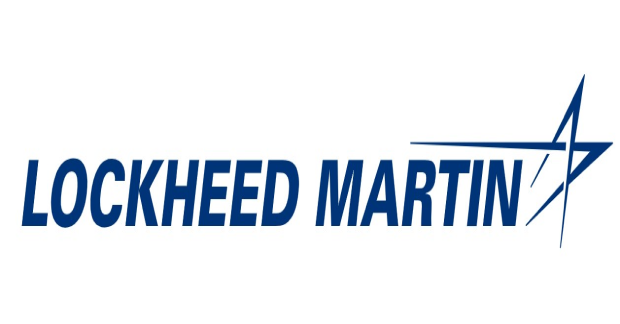Market Size of military satellite Industry

|
|
Study Period | 2017 - 2029 |
|
|
Market Size (2024) | USD 31.97 Billion |
|
|
Market Size (2029) | USD 53.85 Billion |
|
|
Largest Share by Orbit Class | LEO |
|
|
CAGR (2024 - 2029) | 10.99 % |
|
|
Largest Share by Region | Asia-Pacific |
Major Players |
||

|
||
|
*Disclaimer: Major Players sorted in no particular order |
Military Satellite Market Analysis
The Military Satellite Market size is estimated at USD 31.97 billion in 2024, and is expected to reach USD 53.85 billion by 2029, growing at a CAGR of 10.99% during the forecast period (2024-2029).
31.97 Billion
Market Size in 2024 (USD)
53.85 Billion
Market Size in 2029 (USD)
4.24 %
CAGR (2017-2023)
10.99 %
CAGR (2024-2029)
Largest Market by Satellite Mass
68.18 %
value share, above 1000kg, 2022
Large satellites register higher demand due to applications such as satellite radio, communications, remote sensing, planetary security, and weather forecasting.
Largest Market by Satellite Subsystem
80.28 %
value share, Propulsion Hardware and Propellant, 2022
The demand for these propulsion systems is driven by the launch of mass satellite constellations into space. They are used for transferring the spacecraft into orbit.
Largest Market by Orbit Class
84.81 %
value share, LEO, 2022
LEO satellites are increasingly being adopted in modern communication technologies. These satellites serve an important role in Earth observation applications.
Largest Market by Application
83.28 %
value share, Earth Observation, 2022
Earth observation satellites are used for weather forecasting, forestry mapping, and pollution monitoring. The growing adoption of VAS by private companies and organizations is expected to fuel the growth of satellite-based Earth observation.
Leading Market Player
46.72 %
market share, Lockheed Martin Corporation, 2022

Lockheed Martin is the second leading player in the market and has a strong product portfolio for military satellites. The company's civil and military customers include USAF, the US Navy, DARPA, NASA, and NOAA.
Faster relay of communication is driving the LEO segment to occupy a major share of 84.8% in 2023
- A satellite or a spacecraft is usually placed into one of many special orbits around the Earth, or it can be launched into an interplanetary journey based on its intended application. Out of the three orbits, namely low Earth orbit (LEO), geostationary orbit (GEO), and medium Earth orbit (MEO), the LEO orbit is the most widely preferred one because of its proximity to the Earth.
- Many weather and communication satellites tend to have high Earth orbits, which are farthest from the surface. Satellites in mean (medium) Earth orbit include navigational and specialized satellites designed to monitor a specific area. Each distance has benefits and challenges, including increased coverage and decreased energy efficiency. Most science satellites, including NASA's Earth Observation System team, are in low Earth orbit.
- During 2017-2022, out of the 57 satellites launched in the MEO orbit, most were built for navigation/global positioning purposes. Similarly, out of the 147 satellites in the GEO orbit, most were deployed for communication and Earth observation purposes. Around 4,131 LEO satellites manufactured and launched were owned by North American organizations in that period.
- The increasing use of satellites in areas such as electronics intelligence, Earth science/meteorology, laser imaging, and optical imaging is expected to drive the demand for the development of satellites during the forecast period.
The surge in the number of defense satellites globally is expected to aid the military satellites market
- The global defense expenditure crossed over USD 2 trillion in 2022, with the major military power, the United States, surging its defense expenditure by USD 773 billion. The increasing importance of the US Space Force is due to it taking over the operation of all military satellite communications satellites. The US armed forces are integrating space systems with air, land, and sea platforms as military forces increasingly rely on satellites for operations.
- The United States was followed by China, India, Russia, and the United Kingdom, which also increased their defense expenditures by 14%, 5%, 6.8%, and 13%, respectively. The major defense players have well-established budgets for their defense satellite domain. For instance, in March 2022, France's Armed Forces Ministry planned to spend USD 706 million in the space domain and earmarked EUR 5.3 billion on military space capabilities and services during 2019-2025.
- The market is witnessing the entry of private players spending huge amounts on R&D to exploit new opportunities in the industry. Companies in North America have emphasized developing new satellite buses in the military satellite market. For instance, in January 2023, Lockheed Martin's first multi-mission spacecraft, the LM 400, is a flexible mid-sized satellite adaptable for military users, readied from the company's Digital Factory production line and scheduled for launch in 2023. During 2017-2022, around 230+ satellites manufactured and launched were owned by military and government organizations in North America. High military budget spending and technology development are expected to drive the North American market at a healthy growth rate, amounting to 91%, during 2023-2029.
Military Satellite Industry Segmentation Military Satellite Industry Segmentation
10-100kg, 100-500kg, 500-1000kg, Below 10 Kg, above 1000kg are covered as segments by Satellite Mass. GEO, LEO, MEO are covered as segments by Orbit Class. Propulsion Hardware and Propellant, Satellite Bus & Subsystems, Solar Array & Power Hardware, Structures, Harness & Mechanisms are covered as segments by Satellite Subsystem. Communication, Earth Observation, Navigation, Space Observation, Others are covered as segments by Application. Asia-Pacific, Europe, North America are covered as segments by Region.
- A satellite or a spacecraft is usually placed into one of many special orbits around the Earth, or it can be launched into an interplanetary journey based on its intended application. Out of the three orbits, namely low Earth orbit (LEO), geostationary orbit (GEO), and medium Earth orbit (MEO), the LEO orbit is the most widely preferred one because of its proximity to the Earth.
- Many weather and communication satellites tend to have high Earth orbits, which are farthest from the surface. Satellites in mean (medium) Earth orbit include navigational and specialized satellites designed to monitor a specific area. Each distance has benefits and challenges, including increased coverage and decreased energy efficiency. Most science satellites, including NASA's Earth Observation System team, are in low Earth orbit.
- During 2017-2022, out of the 57 satellites launched in the MEO orbit, most were built for navigation/global positioning purposes. Similarly, out of the 147 satellites in the GEO orbit, most were deployed for communication and Earth observation purposes. Around 4,131 LEO satellites manufactured and launched were owned by North American organizations in that period.
- The increasing use of satellites in areas such as electronics intelligence, Earth science/meteorology, laser imaging, and optical imaging is expected to drive the demand for the development of satellites during the forecast period.
| Satellite Mass | |
| 10-100kg | |
| 100-500kg | |
| 500-1000kg | |
| Below 10 Kg | |
| above 1000kg |
| Orbit Class | |
| GEO | |
| LEO | |
| MEO |
| Satellite Subsystem | |
| Propulsion Hardware and Propellant | |
| Satellite Bus & Subsystems | |
| Solar Array & Power Hardware | |
| Structures, Harness & Mechanisms |
| Application | |
| Communication | |
| Earth Observation | |
| Navigation | |
| Space Observation | |
| Others |
| Region | |
| Asia-Pacific | |
| Europe | |
| North America | |
| Rest of World |
Military Satellite Market Size Summary
The military satellite market is poised for significant growth, driven by increasing global defense expenditures and the rising importance of space-based capabilities. The market is characterized by a shift towards the development and deployment of satellites in various orbits, with low Earth orbit (LEO) being the most preferred due to its proximity to Earth. This preference is fueled by the growing demand for satellites in electronics intelligence, Earth science, and imaging applications. The United States, followed by countries like China, India, Russia, and the United Kingdom, is leading this growth by integrating space systems with traditional military platforms and enhancing their satellite communication capabilities. The market is also witnessing substantial investments from private players, particularly in North America, where companies are focusing on developing new satellite technologies and small satellite constellations.
The market landscape is fairly consolidated, with major players such as China Aerospace Science and Technology Corporation, Lockheed Martin, and Raytheon Technologies dominating the sector. These companies are actively involved in research and development to capitalize on emerging opportunities. The miniaturization and commercialization of satellite technology have led to increased participation from new market entrants, particularly in Europe and the Asia-Pacific region, where countries like Germany, France, and Japan are investing heavily in space programs. The demand for small satellites is particularly strong, as they offer cost-effective solutions for various military and governmental applications. This trend is expected to continue, with significant investments in space infrastructure and technology development across key regions, ensuring robust market growth in the coming years.
Military Satellite Market Size - Table of Contents
-
1. MARKET SEGMENTATION (includes market size in Value in USD, Forecasts up to 2029 and analysis of growth prospects)
-
1.1 Satellite Mass
-
1.1.1 10-100kg
-
1.1.2 100-500kg
-
1.1.3 500-1000kg
-
1.1.4 Below 10 Kg
-
1.1.5 above 1000kg
-
-
1.2 Orbit Class
-
1.2.1 GEO
-
1.2.2 LEO
-
1.2.3 MEO
-
-
1.3 Satellite Subsystem
-
1.3.1 Propulsion Hardware and Propellant
-
1.3.2 Satellite Bus & Subsystems
-
1.3.3 Solar Array & Power Hardware
-
1.3.4 Structures, Harness & Mechanisms
-
-
1.4 Application
-
1.4.1 Communication
-
1.4.2 Earth Observation
-
1.4.3 Navigation
-
1.4.4 Space Observation
-
1.4.5 Others
-
-
1.5 Region
-
1.5.1 Asia-Pacific
-
1.5.2 Europe
-
1.5.3 North America
-
1.5.4 Rest of World
-
-
Military Satellite Market Size FAQs
How big is the Military Satellite Market?
The Military Satellite Market size is expected to reach USD 31.97 billion in 2024 and grow at a CAGR of 10.99% to reach USD 53.85 billion by 2029.
What is the current Military Satellite Market size?
In 2024, the Military Satellite Market size is expected to reach USD 31.97 billion.

